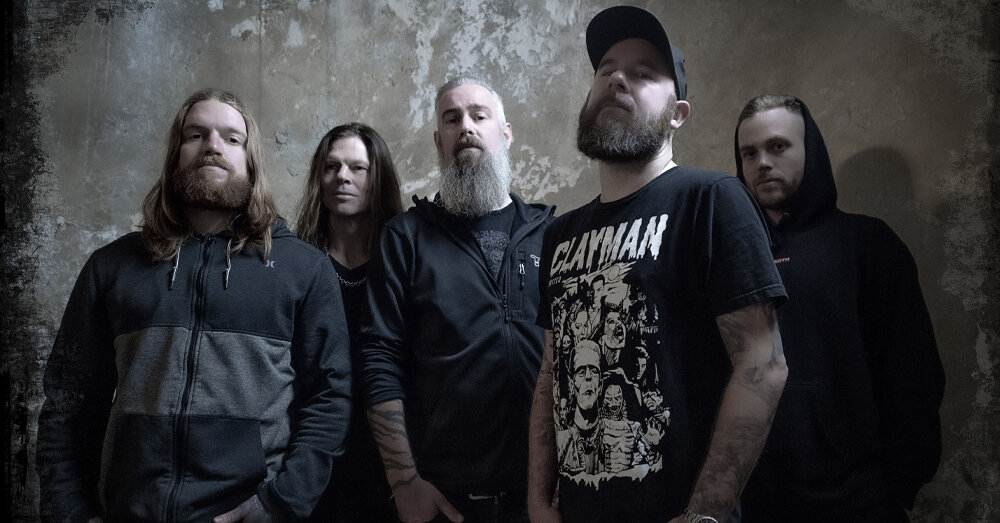Metal music has carved a thunderous path through the annals of music history, leaving behind a trail of iconic bands whose influence continues to resonate. These bands aren’t just musicians; they’re legends who have shaped the very essence of metal as we know it today.
One such band is Metallica, a name synonymous with raw energy and uncompromising musical prowess. From their groundbreaking album “Master of Puppets” to their epic ballad “Nothing Else Matters,” Metallica has redefined what it means to be a metal band. Their ability to blend intricate guitar solos with emotionally charged lyrics has earned them a place in the pantheon of musical greatness.
Another titan in the world of metal is Black Sabbath, often credited as the pioneers of heavy metal. Led by the enigmatic Ozzy Osbourne, Black Sabbath unleashed a dark and brooding sound that shook the foundations of rock music. Songs like “Paranoid” and “War Pigs” are not just songs; they’re anthems that continue to inspire generations of metalheads worldwide.
Moving forward in time, Iron Maiden emerges as a band that transcends generations with their operatic compositions and iconic mascot, Eddie. Albums like “The Number of the Beast” and “Powerslave” showcase their mastery of storytelling through music, weaving tales of history, mythology, and the human condition into their songs.
These bands didn’t just create music; they forged a legacy that continues to influence and inspire new generations of musicians. Their ability to push boundaries, challenge norms, and connect with audiences on a visceral level is what sets them apart as icons of metal music. As fans eagerly await their next tour or album, one thing remains certain: the legacy of these bands will endure, continuing to shape the future of metal music for years to come.
From Black Sabbath to Metallica: Unraveling the Evolution of Metal Music
Metal music, a genre known for its thunderous riffs and powerful vocals, has evolved significantly since its inception. Beginning in the late 1960s, bands like Black Sabbath pioneered a darker, heavier sound that laid the foundation for what would become known as heavy metal. Their ominous lyrics and distorted guitar tones struck a chord with listeners seeking music that pushed boundaries.
As the 1970s progressed, bands like Iron Maiden and Judas Priest introduced new elements to metal, incorporating intricate guitar solos and operatic vocals. This period saw metal gain popularity globally, with bands from Europe and the United States refining the genre’s sound and aesthetic.
By the 1980s, metal had splintered into subgenres like thrash metal, exemplified by bands such as Metallica and Slayer. Thrash metal brought a faster tempo and aggressive style, appealing to a younger audience disillusioned with mainstream music. Meanwhile, bands like Megadeth added technical complexity to the genre, pushing musicianship to new heights.
The 1990s saw metal diversify further, with the emergence of alternative metal bands like Tool and Rage Against the Machine, blending metal with elements of alternative rock and rap. This decade also saw the rise of nu-metal, with bands like Korn and Limp Bizkit infusing metal with hip-hop influences, appealing to a broader audience.
In the 2000s and beyond, metal continued to evolve with the advent of metalcore and deathcore, characterized by intense breakdowns and screamed vocals. Bands like Avenged Sevenfold and Bring Me The Horizon bridged the gap between metal and mainstream popularity, reaching new heights in both album sales and concert attendance.
Today, metal remains a vibrant and diverse genre, with bands continuing to innovate and push boundaries. From its humble beginnings with Black Sabbath to the global phenomenon of Metallica, the evolution of metal music is a testament to its enduring appeal and the passion of its dedicated fanbase.
Legends of Metal: How Iron Maiden and Judas Priest Redefined Heavy Rock
Iron Maiden emerged from the bustling music scene of East London in the late 1970s, unleashing a sound that blended intricate guitar harmonies with operatic vocals. Their debut self-titled album in 1980 set the stage for their epic storytelling style, introducing iconic tracks like “Phantom of the Opera” and “Running Free.” Led by the charismatic Bruce Dickinson, Iron Maiden’s penchant for historical and literary themes turned their albums into sagas, captivating fans with narratives that spanned across time and space.
Meanwhile, across the English Midlands, Judas Priest forged their own path with a raw, aggressive style that would become the blueprint for countless metal bands. Rob Halford’s soaring vocals and the twin guitar attack of Glenn Tipton and K.K. Downing defined their sound, blending seamlessly on classics like “Breaking the Law” and “Painkiller.” With leather-clad imagery and an unmistakable stage presence, Judas Priest became synonymous with the leather and studs aesthetic that influenced generations of metalheads.
Both bands not only dominated the charts but also solidified their status through electrifying live performances. Iron Maiden’s elaborate stage setups, featuring Eddie the Head, their iconic mascot, became legendary spectacles that enhanced their epic storytelling. Judas Priest, on the other hand, brought a relentless energy to their shows, showcasing Halford’s powerful vocals and the band’s unmatched musicianship.
Beyond their musical prowess, Iron Maiden and Judas Priest embodied the rebellious spirit of heavy metal, challenging conventions and pushing boundaries. Their influence transcended the genre, inspiring countless bands and cementing their place in rock history as pioneers and innovators.
As Iron Maiden and Judas Priest continue to tour and release new music, their legacy remains a testament to the enduring power of heavy rock. Their impact on music and culture is profound, and their journey continues to captivate audiences worldwide, ensuring their status as true legends of metal.
Deep Dive into Metallica’s Impact: From ‘Master of Puppets’ to Cultural Phenomenon
When Metallica unleashed ‘Master of Puppets’ in 1986, the world of heavy metal was forever altered. The album wasn’t just music; it was a seismic event that redefined the genre’s possibilities. With its thundering riffs, intricate compositions, and raw lyricism, ‘Master of Puppets’ became the gold standard for thrash metal. Tracks like “Battery” and the epic title track showcased Metallica’s ability to blend aggression with musical complexity, setting a new benchmark that countless bands would aspire to.
But Metallica’s impact transcended music. They became cultural icons, embodying rebellion, resilience, and the spirit of non-conformity. Their music spoke to a generation disillusioned with the status quo, offering a voice to those who felt marginalized or misunderstood. Through their electrifying performances and unapologetic attitude, Metallica carved out a niche that was uniquely theirs.
The band’s journey from underground sensation to global powerhouse was paved with both triumphs and tragedies. From their early days in the Bay Area thrash scene to headlining stadiums around the world, Metallica never lost sight of their roots. They navigated controversies, lineup changes, and personal struggles with a determination that mirrored the intensity of their music.
‘Master of Puppets’ remains a touchstone for fans and musicians alike, a testament to Metallica’s enduring influence. Its impact on popular culture is undeniable, shaping everything from fashion trends to film soundtracks. Even decades after its release, the album continues to resonate with audiences, proving that great music transcends time and trends.
The Rise and Influence of Slayer: Reigning Kings of Thrash Metal
What truly set Slayer apart was their uncompromising approach to lyrics and imagery. Songs like “Angel of Death” and “Raining Blood” delved into dark themes with graphic intensity, challenging societal norms and sparking controversy. They weren’t just making music; they were pushing boundaries and defining a new era of heavy metal.
Throughout the 1980s and 1990s, Slayer’s influence continued to grow. They were fearless in their exploration of themes that others shied away from, building a fiercely loyal fanbase known for their dedication and passion. Slayer’s live performances became the stuff of legend, with mosh pits erupting and fans reveling in the sheer energy of their music.
Even as the landscape of metal evolved, Slayer remained steadfast in their commitment to their signature sound. Albums like “Reign in Blood” and “Seasons in the Abyss” are hailed as masterpieces, showcasing their ability to blend ferocity with musicality. They weren’t just musicians; they were architects of a genre, inspiring countless bands and shaping the future of metal.
As they bid farewell to touring with their final world tour, Slayer leaves behind a legacy that is as enduring as it is powerful. Their impact on thrash metal is undeniable, leaving a mark that will resonate for generations to come. In a genre known for its intensity and innovation, Slayer reigns supreme as the kings of thrash metal, forever etched into the annals of heavy music history.
Black Sabbath: Pioneers of Heavy Metal and Their Lasting Influence
When we think of heavy metal, one band stands out as the true trailblazers: Black Sabbath. Formed in Birmingham, England in 1968, Black Sabbath revolutionized rock music with their dark, heavy sound and haunting lyrics. The band consisted of Ozzy Osbourne on vocals, Tony Iommi on guitar, Geezer Butler on bass, and Bill Ward on drums. Together, they created a raw, powerful sound that laid the foundation for an entire genre.
What set Black Sabbath apart was their ability to blend bluesy, downtuned guitar riffs with themes of darkness, war, and the occult. Songs like “Iron Man,” “Paranoid,” and “War Pigs” became anthems for a generation disillusioned by war and social unrest. Their music wasn’t just loud; it was a visceral experience that spoke to the fears and frustrations of their audience.
Beyond their music, Black Sabbath’s influence extended far beyond the realm of rock. They pioneered the use of imagery and themes that would later define the genre of heavy metal. Their album covers often featured dark, atmospheric artwork that mirrored the intensity of their music. This visual style became synonymous with the genre and influenced countless bands that followed in their footsteps.
As pioneers of heavy metal, Black Sabbath also set a standard for live performances. Their concerts were legendary for their energy and raw power, with Ozzy Osbourne’s charismatic stage presence captivating audiences worldwide. They showed that heavy metal wasn’t just about music; it was about creating a powerful, immersive experience that left a lasting impact on everyone who witnessed it.
Even as their careers progressed and band members changed over the years, Black Sabbath’s legacy remained intact. They continued to release albums that pushed the boundaries of heavy metal and inspired new generations of musicians. Their influence can be heard in bands across the globe, from Metallica to Slipknot, who credit Black Sabbath as a major influence on their own music.
Black Sabbath’s impact on heavy metal music is undeniable. They forged a path that countless bands would follow, blending raw power with dark imagery to create a genre that resonated with millions. Their music continues to be celebrated and studied, ensuring that their legacy as pioneers of heavy metal will endure for generations to come.
Guns N’ Roses: A Journey from Sunset Strip to Global Rock Icons
Formed in 1985, Guns N’ Roses emerged from the melting pot of LA’s rock clubs, where dreams clashed with harsh realities. Their lineup featured Axl Rose’s distinctive vocals, Slash’s soulful guitar riffs, Izzy Stradlin’s rhythmic prowess, Duff McKagan’s solid bass lines, and Steven Adler’s thunderous drumming. This eclectic mix of personalities and musical styles became the hallmark of their sound—a fusion of hard rock, punk, and blues that resonated with a generation seeking authenticity in music.
The band’s debut album, “Appetite for Destruction,” released in 1987, catapulted them to international fame with its raw energy and anthemic tracks like “Welcome to the Jungle” and “Sweet Child o’ Mine.” It wasn’t just their music that captured hearts; it was their attitude—an unapologetic embrace of excess, rebellion, and the tumultuous realities of life on the edge.
Throughout the late 1980s, Guns N’ Roses dominated headlines with their wild antics both on and off stage. Their live performances were electrifying spectacles of raw energy and unpredictability, earning them a reputation as the “most dangerous band in the world.” Yet, amid the chaos, their musical brilliance shone brightly, solidifying their place as cultural icons.
The early 1990s brought both triumph and turbulence. The albums “Use Your Illusion I” and “Use Your Illusion II” showcased the band’s evolution, delving into deeper themes while maintaining their trademark intensity. Hits like “November Rain” and “Don’t Cry” revealed a more introspective side to their music, proving their versatility and enduring appeal.
Despite lineup changes and internal conflicts, Guns N’ Roses’ legacy endures. Their influence on rock music is profound, inspiring countless artists and resonating with generations beyond their own. Today, their songs continue to evoke the same raw emotions and rebellious spirit that first captivated audiences on Sunset Strip—a testament to the timeless power of true rock ‘n’ roll.
Exploring Megadeth’s Thrash Metal Revolution and Dave Mustaine’s Legacy
Megadeth, renowned for its fierce blend of speed, aggression, and intricate musicality, stands tall in the annals of thrash metal history. Founded by the iconic Dave Mustaine, the band emerged in the early 1980s, quickly carving out a niche with their blistering guitar riffs and politically-charged lyrics. Mustaine, a former member of Metallica, brought a unique edge to Megadeth’s sound, pushing boundaries with his distinct style and relentless energy.
The band’s debut album, “Killing Is My Business… and Business Is Good!” (1985), set the stage for their relentless pursuit of musical excellence and lyrical depth. Tracks like “Rattlehead” and “Mechanix” showcased Mustaine’s virtuosity as a guitarist and lyricist, exploring themes of warfare, corruption, and personal turmoil with raw intensity.
Megadeth’s breakthrough came with “Peace Sells… but Who’s Buying?” (1986), a seminal work that solidified their place in the thrash metal pantheon. The title track, with its iconic bassline and provocative lyrics, became an anthem of rebellion for a generation disillusioned with societal norms. Mustaine’s vocals, seething with defiance and disillusionment, resonated deeply with fans, cementing his status as a visionary frontman.
Throughout the decades, Megadeth has continued to evolve, navigating lineup changes and personal challenges while staying true to their thrash roots. Albums like “Rust in Peace” (1990) and “Countdown to Extinction” (1992) further established their musical prowess and lyrical depth, addressing issues from environmental degradation to existential angst.
Dave Mustaine’s legacy extends beyond music; his influence on the genre and his resilience in the face of adversity have inspired countless artists. From his early struggles with addiction to his triumphant return to the stage, Mustaine’s journey epitomizes the spirit of perseverance and artistic integrity.








